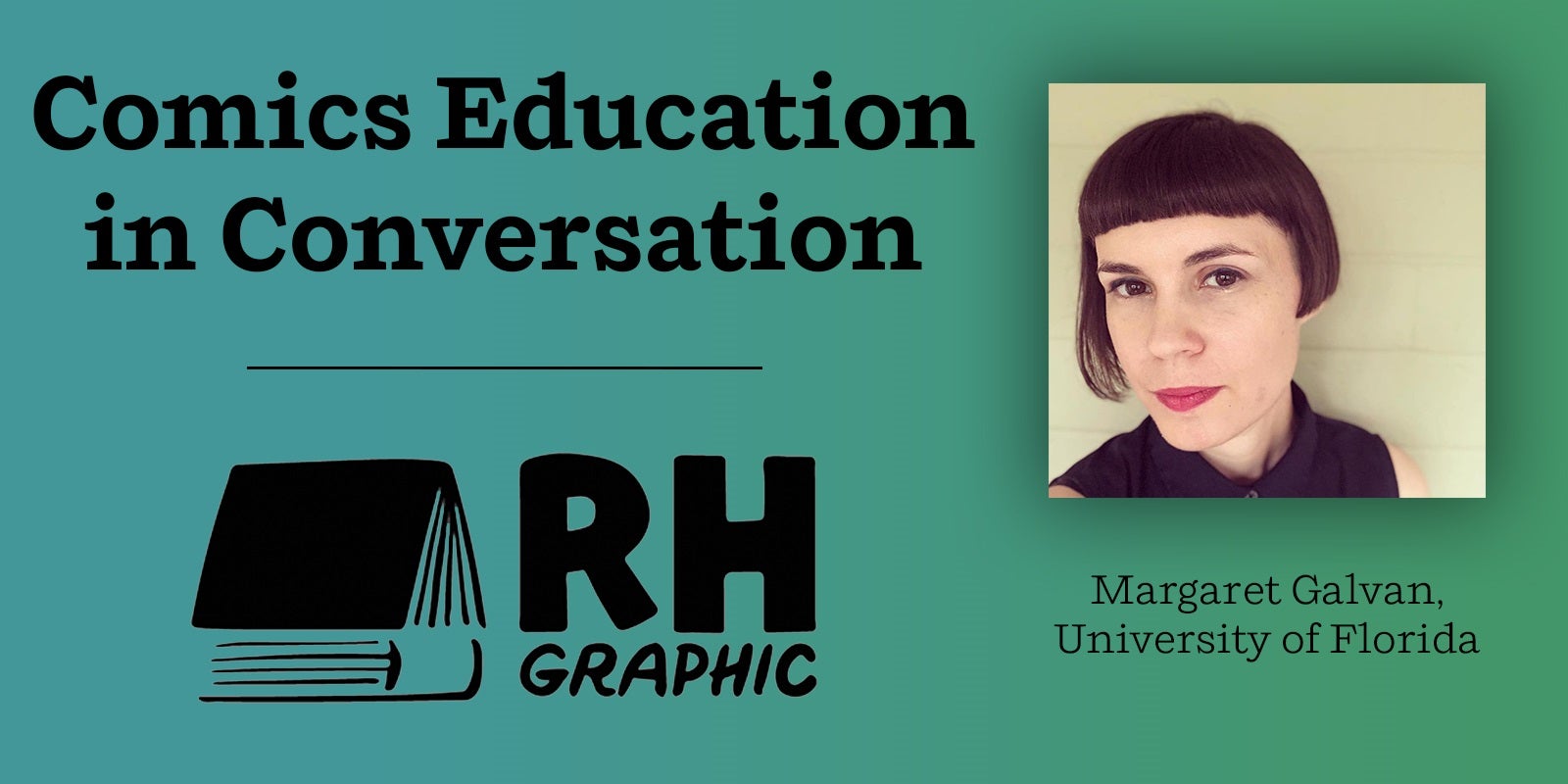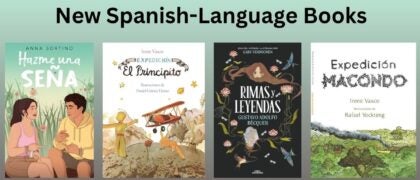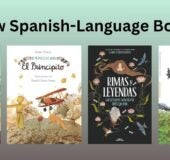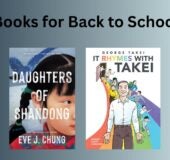Margaret Galvan is Assistant Professor of Visual Rhetoric in the Department of English at the University of Florida. She is finishing a book, In Visible Archives of the 1980s, under contract with the University of Minnesota Press, which examines how publishing practices and archives have shaped understandings of the visual within feminist and queer activism. In 2021-22, she will be an External Faculty Fellow at the Stanford Humanities Center researching her second book about how American LGBTQ cartoonists in the 80s-90s formed community through comics. Her published work, which analyzes comics in social movements, can be found in journals like American Literature, Archive Journal, Australian Feminist Studies, iNKS, Journal of Lesbian Studies, and WSQ: Women’s Studies Quarterly. See margaretgalvan.org for more information.
How did you get started reading comics?
The X-Men: The Animated Series (1992-1998) cartoon got me into comics. I was 7 when the series first aired, and I and all my girl friends were immediately hooked. I purchased my first comic soon thereafter—X-Men #24 (1993)—at my local SoCal grocery store, which stocked a number of popular titles. My friends and I created our own spinoff characters who were daughters of the X-Men, and we played our X-Women at recess and drew pictures and wrote stories about the characters in the after school daycare. (I’m currently in the process of coediting a volume on the cartoon series for University Press of Mississippi with Jeremy M. Carnes and Nicholas E. Miller where I’ll discuss my girlhood affections for the show.) After a few years, I got a subscription through Marvel to a couple of X-Men titles, so that I could be sure not to miss any issues. Unfortunately, in the mid 90s, Marvel went bankrupt, canceling my subscription. Even worse, my local comic shop closed, and the grocery store no longer stocked comics. So, for many years thereafter, I didn’t read or have easy access to American comics.
In middle and high school, my friends and I watched and read a lot of Japanese anime and manga—Sailormoon, Ranma ½, Key the Metal Idol, Samurai Pizza Cats, Saber Marionette J, Vampire Hunter D, Fushigi Yuugi, Clover, Revolutionary Girl Utena, Neon Genesis Evangelion, Angel Sanctuary, Video Girl Ai, 3×3 Eyes, Pokémon, Digimon, Rurouni Kenshin, Bubblegum Crisis, Ninja Scroll, etc. We read them as they were being published in translation, and we also purchased manga from the local Japanese bookstores in nearby Torrance, CA, and read fan translations we found on the internet. One of my friends and I even made a website in honor of some obscure Sailormoon villains on Geocities, and I was briefly in a Pokémon RPG.
It wasn’t really until college that I started reading American comics again, but I felt a bit dissatisfied about not being able to locate comics that really spoke to me as a woman and that were by women in the comic shops I visited in Los Angeles. They never really felt like welcome places for me.
How did you get from your first comics-reading experience to doing academic work in the medium?
It wasn’t until I started my PhD at The Graduate Center, CUNY, that I took a course that incorporated comics. In that class, taught by Nancy K. Miller, who later became my dissertation adviser, we read a number of graphic memoirs as well as proofs from Hillary Chute’s Graphic Women (2010) that Miller was publishing as part of her Gender and Culture Series at Columbia University Press. Chute’s focus on women was a light bulb moment for me—the comics were there all along, but I just wasn’t seeing them. From the very first page of Chute’s book, where she makes a long list of contemporary women cartoonists, the implication was clear—women had made a significant impact in the medium, but were not recognized as doing so. Her overview of women who produced comics in the 1970s and 80s as part of the feminist underground intrigued me and studying those works is where I started my scholarship on comics. Jonathan W. Gray, a fantastic scholar who researches race and comics, was also an important early mentor, who helped convince me that comics were a viable area of study and who introduced me to other key figures in the field including Karen Green, Ramzi Fawaz, and Chute herself. Because I found myself interested in old and obscure comics, I started writing grants to fund travel to archives to study underground comics and it was there that I started to discover an even larger, uncharted world of comics by women and queer people in the period.
Have you seen a change in the academic and/or popular reception of comics and graphic novels over the course of your career?
Definitely! Over the past decade, I’ve watched as the conferences, academic journals, and publishers devoted to comics have proliferated and welcomed in new, interested audiences. I’ve been especially glad to see women, BIPOC, and LGBTQ+ more prominent and welcome in comics as creators, scholars, and fans with more events dedicated to those specific populations.
Personally, I was lucky to work with people who always supported and encouraged my scholarship on comics—before me, Miller advised Tahneer Oksman, whose all-comics dissertation became “How Come Boys Get to Keep Their Noses?” (2016), which is a model for engaged scholarship on contemporary cartoonists. I certainly encountered detractors, but I didn’t listen to them. In 2017, I landed a tenure-track job at the University of Florida in visual rhetoric, where I get to teach undergraduate and graduate courses in comics to support the vibrant comics program here built many moons ago by the late Don Ault, a pioneer in comics scholarship, and that has been supported in recent years by many department faculty including Anastasia Ulanowicz and Terry Harpold.
You’ve done academic work on feminist and queer comics. Can you tell us a little about that?
Sure. My work is broadly interested in how women artists have theorized their sexuality visually, and I center the 1980s in particular, which is a fruitful but often overlooked period as it lies between the height of second-wave feminism in the 1970s and the beginning of the third-wave in the 1990s. In my first book that I am currently completing, I study this period and prioritize comics in this discussion, as they were a vital way that women documented both the feminist movement and themselves in short comics published in grassroots newspapers as well as in longer, independent comics like Roberta Gregory’s Dynamite Damsels (1976) and Lee Marrs’ The Further Fattening Adventures of Pudge, Girl Blimp series (1973-1978).
A number of the women producing really powerful comics about their sexuality were lesbian and biseuxal women, and, in the 1980s, the emergence of the Gay Comix series (1980-1998) gave them a space to submit their work and start to feel connected to other farflung cartoonists who normally only appeared in their local periodicals. Unlike many of the cartoonists active in the underground in the 1970s who clustered together, living and working in and around San Francisco, gay and lesbian cartoonists remained scattered all across the United States and internationally. So, publications like Gay Comix were vital in showing them that there were other people like them—not just other queer people but more specifically other queer cartoonists. That was major. Gay Comix really laid the groundwork for the proliferation of queer comics, including an all-but-forgotten lesbian comics boom in the 1990s that was supported by networks that grew out of Gay Comix.
My second book that I’m starting work on takes up this history as I dig into how communities of LGBTQ cartoonists in the 1980s-1990s innovated comics through various grassroots formats. In my scholarship, I am committed to recovering overlooked histories and artists and showing how they fit into a larger artistic lineage that includes but also extends outwards from comics.
I’m also fascinated by the work you’ve done on mapping comics community connections – can you tell us about that work, and about what you’re finding about the role and importance of community in comics?
We already know how formal collaboration on the page is so integral to the history of mainstream comics where so many hands worked on any one page. I’m interested in a different and more informal kind of collaboration by thinking about all the individuals who supported and influenced even independently produced work. So many of the women I’ve been talking about produced comics that were printed in local grassroots newspapers and were sometimes shaped by or reflected the politics of the collective.
Like in mainstream comics, editors also played a role in mentoring some of these cartoonists and encouraging them to develop their work for comics series like Gay Comix edited by Howard Cruse, then Robert Triptow, and then Andy Mangels as well as later series like OH… (1992-1998) edited by Hope Barrett and Roz Warren’s many collections of comics by women that she produced in the 1990s, including Dyke Strippers (1995), which profiled 35 promiment lesbian and bisexual cartoonists.
I’m interested in how queer cartoonists started forming independent communities of support where they shared tips and publication opportunities. In 1990, cartoonist Andrea Natalie started the Lesbian Cartoonists Network (LCN), a group and quarterly newsletter that very soon had 40 women invested and contributing comics and advice. In the 1990s, there were also a lot of cartoonists actively self-publishing zines where they printed and reviewed other comics and included lists of publications, giving fellow readers the ability to find and read other cartoonists. All of this community energy around the comics is so vital because, especially for queer cartoonists where publication opportunities were more limited, such networks of support made the work possible and allowed artists to thrive.
You run the Comics and Graphic Narratives forum for the MLA. Can you tell us a little bit about that group, and what they do?
The Comics and Graphic Narratives Forum of the MLA organizes panels on comics for the annual MLA conference, the major conference for folks who study languages and literature. The Forum has been around for a little over 10 years, hosting 1-3 panels every year, and the range of those panels have really showcased the vibrancy and range of comics scholarship. I’ve attended every MLA that the Forum has been active, and I was elected to serve on the Forum a few years ago. It’s shaped my own scholarship not only by introducing me to the work of leaders in the field and giving me models for my own work, but also by introducing me to peers, who have become my collaborators and close friends, like Leah Misemer, who I met at MLA in 2014. She and I have put together two panels—one of which became a special issue of iNKS —and, now that she is also on the Forum, we are working together on a third panel this year. It’s been gratifying to serve on the Forum and help inspire the next generation of comics scholars.
There’s long been a call for increased diversity in comics – and that’s only gotten more prominent. What are you seeing changing in this space today?
Over the last several years, I’ve seen much more attention to supporting the work of BIPOC and LGBTQIA+ cartoonists in addition to women. MariNaomi’s work in creating and maintaining the Cartoonists of Color, the Queer Cartoonists, and the Disabled Cartoonists databases has been so crucial. Within queer comics specifically, I see more focus on representing more identities under the queer umbrella—there’s a lot of exciting, emerging work from asexual, non-binary, and trans perspectives that I see on Instagram and released by small and more major presses alike. Events like the Queers & Comics and Flamecon conferences have also shown just how many queer creators there are active today in indie and mainstream spaces and provided the opportunity for intergenerational exchange, which is so vital since queer comics from earlier generations are not always easily accessible today as I was describing earlier.
I teach classes about comics by women and queer people and prioritize BIPOC creators in all of my classes, so this energy and attention gives me no shortage of contemporary comics to pair alongside historic comics that treat these perspectives.
Favorite or new comics recommendations?
I follow a lot of cartoonists and illustrators on Instagram, and I love all the different ways that they engage the platform, sharing new work, adapting earlier work, and showing their process in photos and short videos. You get to see their work come to life and often also get to see the other things that matter in their lives, including their cats and other pets. Among the cartoonists I follow, there’s also a practice of engaging social activism alongside or with their comics. I especially appreciate Mira Jacob’s work in this regard—she recently hosted a free comics workshop as a fundraiser for COVID Relief in India. I also am often really moved by Mona Chalabi’s work—she’s a data journalist and illustrator who puts hard-hitting statistics on police and gun violence, pandemic facts, and election data into digestible and powerful comics-like illustrations. In a recent post, she made use of Instagram’s ability to post images together in series to emphasize just how many police escape conviction after killing civilians.
To answer this question, I scrolled through all the accounts that I follow to put together those favorites, whose posts I look forward to. I have a definite inclination towards work featuring fierce women and queer people and cats. Needless to say, I’ve likely forgotten someone, but these twenty-six never disappoint:
Rachel Bard, Archie Bongiovanni, Laura Callaghan, Jennifer Camper, Caitlin Cass, Sage Coffey, Robin Eisenberg, Leslie Ewing, Tor Freeman, Dorothy Gambrell, Siobhan Gallagher, Rachael House, David Kelly, Rob Kirby, Terry Runyan, Sophie Labelle, Kate Leth, Ellen Lindner, MariNaomi, Diane Noomin, Jules Scheele, Agathe Sorlet, Sina Sparrow, Christine Suggs, Connie Sun, Biana Xunise
SOCIAL MEDIA
Twitter: @magdor
Website: http://margaretgalvan.org/





